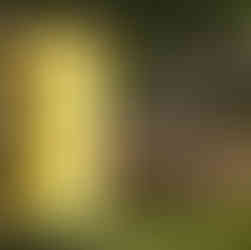Considerations for Making Your Garden Bee-Safe
- Groton Garden Club
- Apr 14, 2024
- 3 min read

Bee populations are essential to the environment, playing a crucial role in pollinating plants. Unfortunately, their numbers are declining due in part to the use of harmful pesticides such as neonicotinoids. Bees aren’t the only ones impacted by neonicitinoids they are also contributing to the decline in beneficial pollinators like Monarch Butterflies and are linked to birth defects in white-tailed deer. This article will address neonicotinoids impact on bees; by understanding what neonicotinoids are and how to avoid them, gardeners can create a safe haven for other pollinators and wildlife in your area.
What are Neonicotinoids?
Neonicotinoids, or “neonics” are a class of synthetic insecticides chemically similar to nicotine. They are highly effective in controlling a variety of pests by targeting the nervous system of insects. Common neonicotinoids include imidacloprid, clothianidin, thiamethoxam, acetamiprid, and thiacloprid.
Neonicotinoids can be applied in several ways:
- Seed Treatments: Seeds are coated with the insecticide before planting.
- Soil Treatments: The insecticide is applied to the soil and taken up by the plant roots.
- Foliar Sprays: Sprayed directly onto plant leaves.
- Tree Injections: Injected into trees to protect against pests.
These methods result in the insecticide being absorbed and distributed throughout the plant, including its nectar and pollen, which can harm bees and other pollinators that come into contact with them.
Neonicotinoids are persistent in the environment, often remaining in soil and water for extended periods. They have non-target effects, harming beneficial insects like bees, butterflies, and other pollinators. Even at non-lethal doses, neonicotinoids can impair bees’ ability to forage, navigate, reproduce, and fight off diseases.
When purchasing plants, it’s crucial to ensure they haven’t been treated with harmful pesticides. Here’s some ideas on how to discuss this with your local nursery:
Ask Directly: Inquire if their plants are treated with neonicotinoids or other harmful pesticides.
Check for Organic Certification: Look for USDA organic labels, indicating the plants were grown without synthetic pesticides.
Discuss Pest Management Practices: Ask if they use Integrated Pest Management (IPM) practices, which minimize the use of chemicals and rely on natural pest control methods.
Create a Native Bee-Safe Garden
To support local bee populations, consider these steps for creating a bee-safe garden.
Choose Native Plants
Native plants are adapted to the local environment and have co-evolved with native pollinators. Examples include:

Milkweed (Asclepias spp.)

Coneflower (Echinacea spp.)

Black-eyed Susan (Rudbeckia hirta)

Bee Balm (Monarda spp.)

Goldenrod (Solidago spp.)
Plant Diverse Species
Diversity ensures a continuous food supply throughout the growing season. Include herbs, flowering shrubs, fruit trees, perennials, and annuals – try to focus on native species, but many non-native plants can also be beneficial:
Herbs: Lavender, Thyme, Basil, Dill, Oregano.

Shrubs: Summersweet, Blueberry, Spicebush.

Trees: Apple, Cherry, Serviceberry, Redbud, Chestnut.

Perennials: Salvia, Catmint, Sedum, Coreopsis, Asters.

Annuals: Sunflowers, Marigolds, Zinnias, Cosmos, Calendula.

Avoid Pesticides
Refrain from using systemic insecticides and other harmful chemicals. Opt for natural pest control methods and organic gardening practices. This starts with being aware of the use of pesticides and neonics in the plants you are growing from seed or purchasing from nurseries.
Provide Habitat
Create bee habitats by leaving some areas of your garden undisturbed, providing nesting sites, and ensuring a water source is available. You can easily make your own pollinator puddle water sources, build butterfly hotels, as well as birdhouses to help support the local habitat.
By choosing bee and pollinator-safe plants devoid of neonics and implementing pollinator-friendly gardening practices, you can significantly contribute to the health and sustainability of bee populations in and around Groton. You can refer to resources from the Xerces Society and other conservation organizations for more detailed information.









Comments